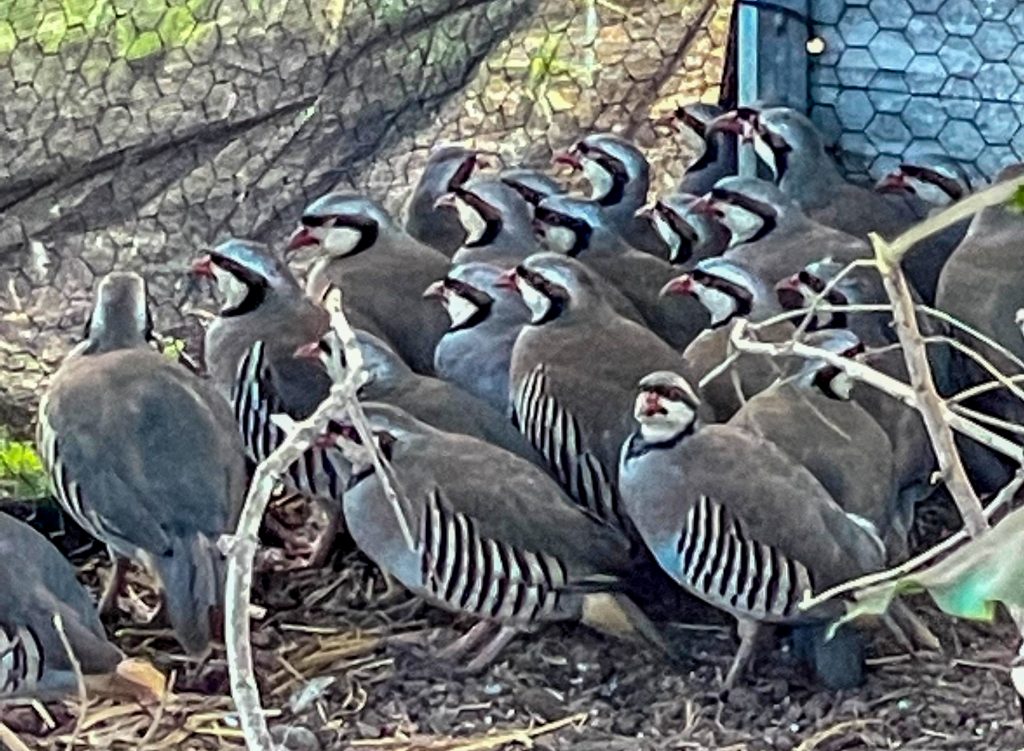Art Contest Opens for Hawaiʻi Wildlife Conservation & Game Bird Stamps
The Hawaiʻi State Department of Land and Natural Resources now is accepting submissions for its annual art contest of two local wildlife species for the 2022-23 Hawaiʻi Wildlife Conservation and Game Bird Stamp.
The wildlife conservation stamp is a requirement on Hawai‘i state hunting licenses. The game bird stamp is required for anyone intending to hunt game birds. Both stamps through DLNR’s Division of Forestry and Wildlife will be available to stamp collectors. Winners will receive a maximum award of $1,000.
The subjects for this yearʻs stamps is the Chukar Partridge for the Game Bird Stamp and the ʻIʻiwi for the Wildlife Conservation Stamp.
- The Chukar Partridge (Alectoris chukar) was introduced to Hawaiʻi in 1923 and now occurs on all main Hawaiian Islands. It is native to Asia and eastern Europe, from Israel to Nepal. They measure about 14 inches long and have a grey-brown back with sides striped in black and white feathers. Their face is white with a black band across the eyes down to the neck. They are a dominant component of the avifauna in high elevation shrubland and may have filled a niche held by now extinct or rare birds. The role of the alien bird in facilitating seed dispersal and germination of native plant species has been found to be beneficial in restoring degraded ecosystems.
- The ʻIʻiwi (Vestiaria coccinea) are federally listed as threatened statewide. Adults have a vibrant red plumage with black wings and tail, and a curved salmon-colored bill. The juvenile is buffy with black spots, shorter dusky bill becoming yellow in color then salmon with age. They feed primarily on ʻōhiʻa nectar, but also visit tublar flowers of understory plants like ʻakala and lobelias and take insects.
Entry Requirements:
- Setting: Hawaiʻi habitat
- Size: Completed painting with a maximum of 24” by 36” and unframed (to be reduced to 1” X 1.5” stamp)
- Medium: Oil or acrylic
- Entry: Completed oil or acrylic painting or an 8.5” X 11” photo/print/photocopy of a completed painting
- Deadline: All entries must be received by Feb. 25, 2022. Notification of the winner will be made in March of 2022.
- Shipping fee: All paintings sent must be accompanied by a $35.00 fee to cover the cost of returning artwork. If a check is not included, you will need to come to the Administration office to pick up your artwork. Checks are to be made payable to the DLNR. Otherwise, a photo, print or photocopy of an original painting may be sent with no fee (see application form).
Funds from Hawai’i Wildlife Conservation Stamp sales go into the state Wildlife Revolving Fund to support wildlife populations and habitat, and to manage hunting.
Last year, revenues from both stamps were used to cover some of the costs of maintaining hunting units and to add game bird and game mammal hunting opportunities where possible. Proceeds from the sales of wildlife conservation stamps also will provide funds for the annual lease rental of the Lānaʻi Cooperative Game Management Area and several other hunting leases.
















